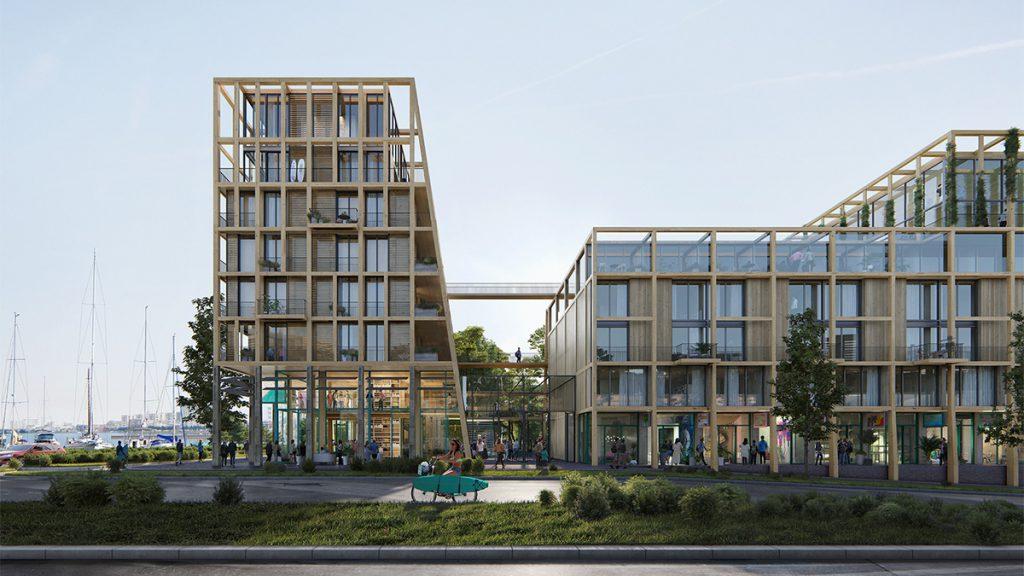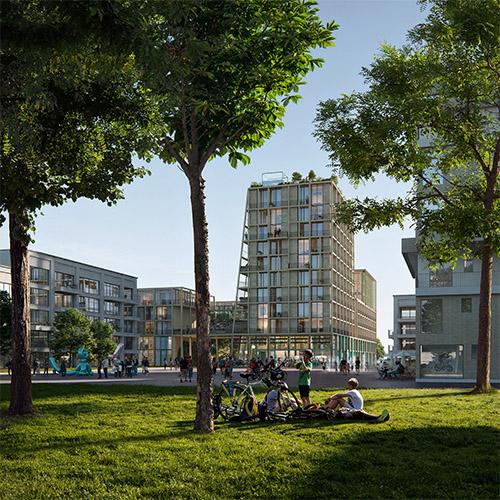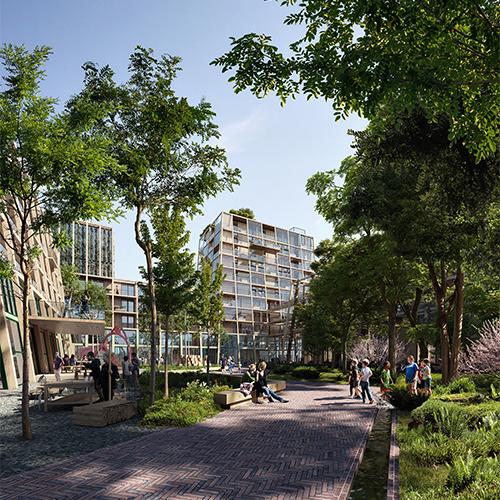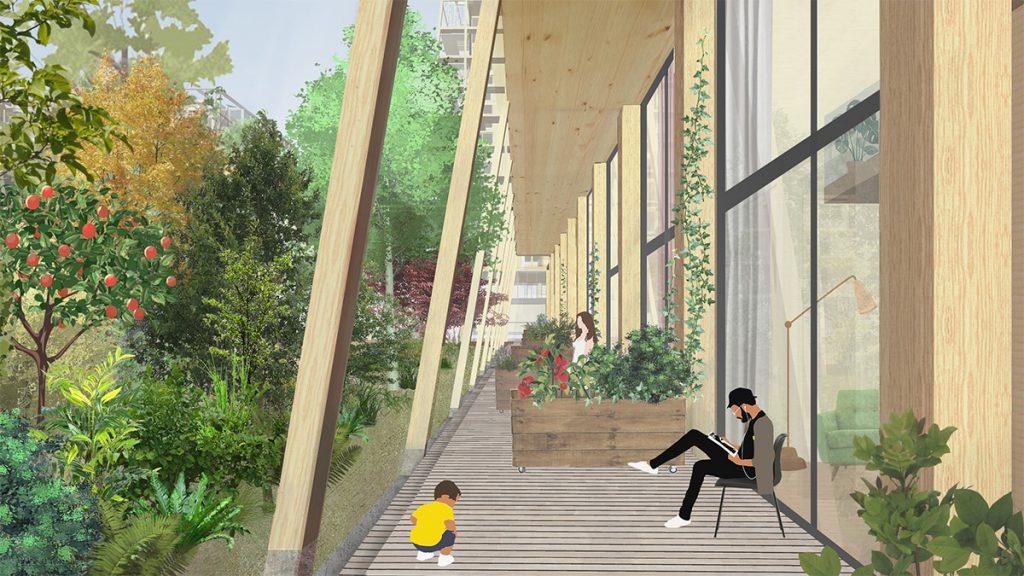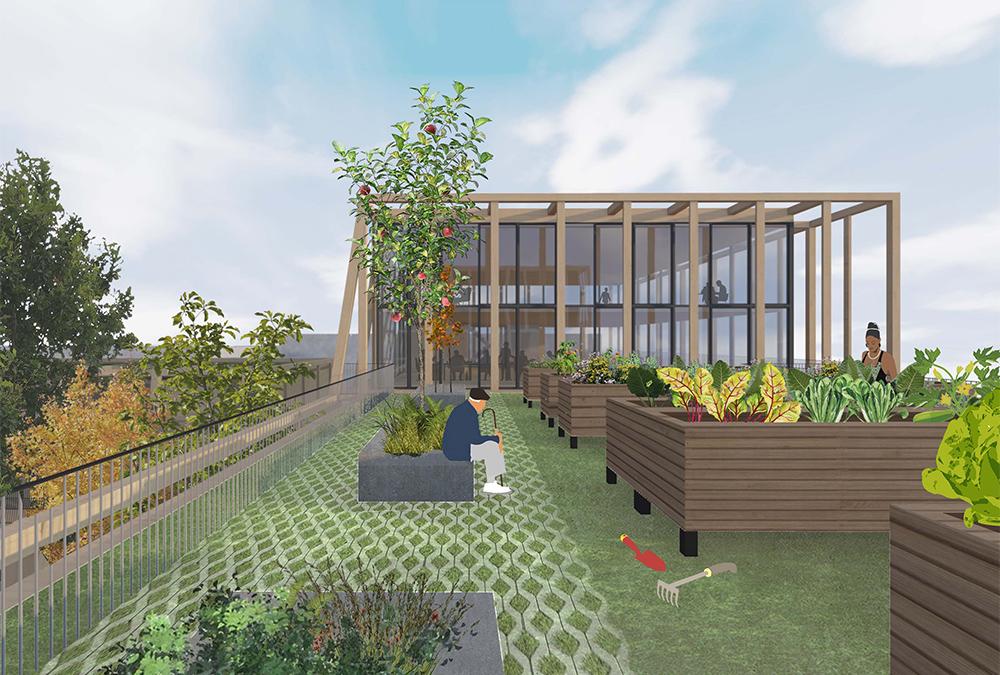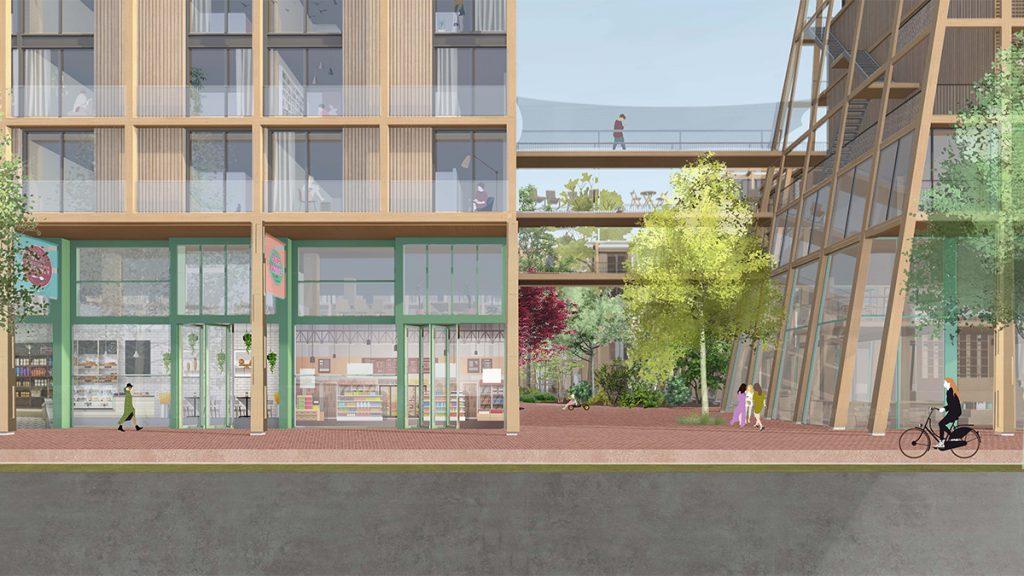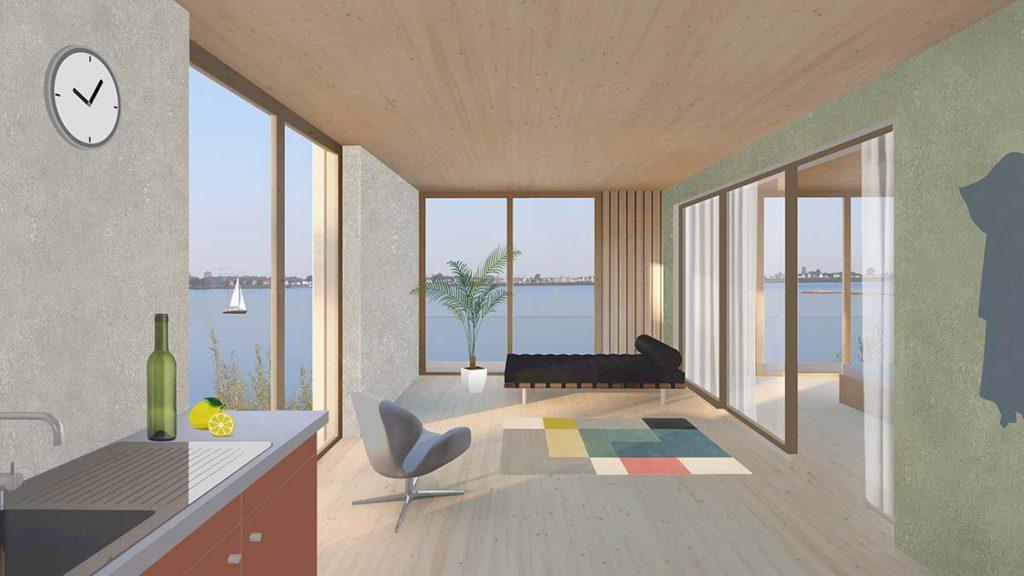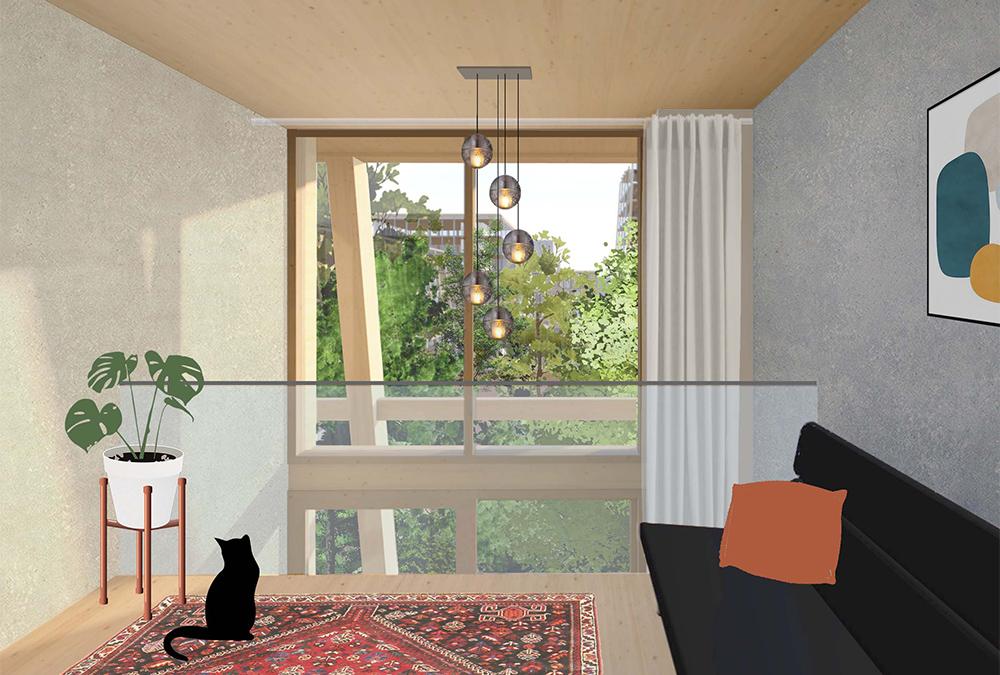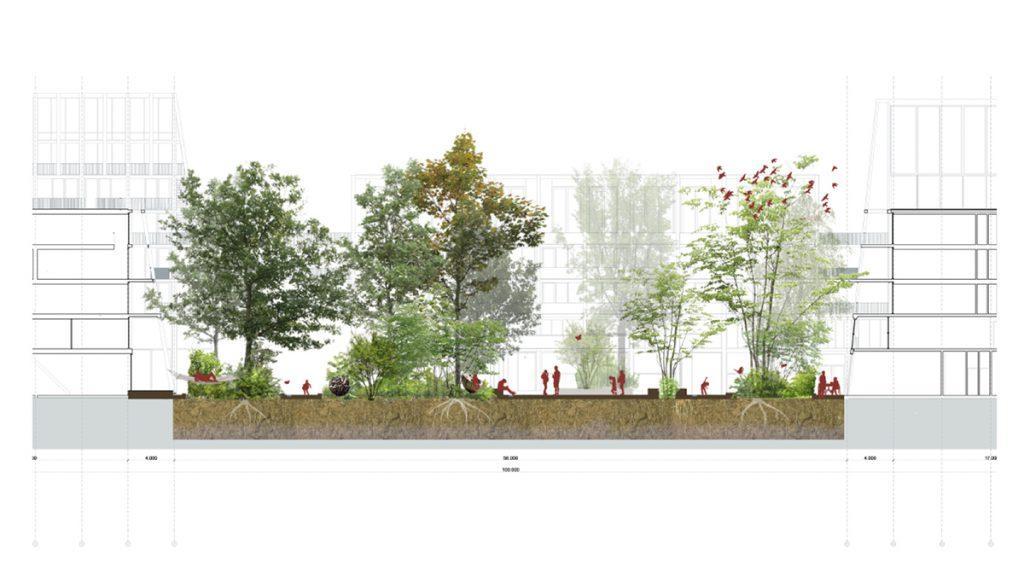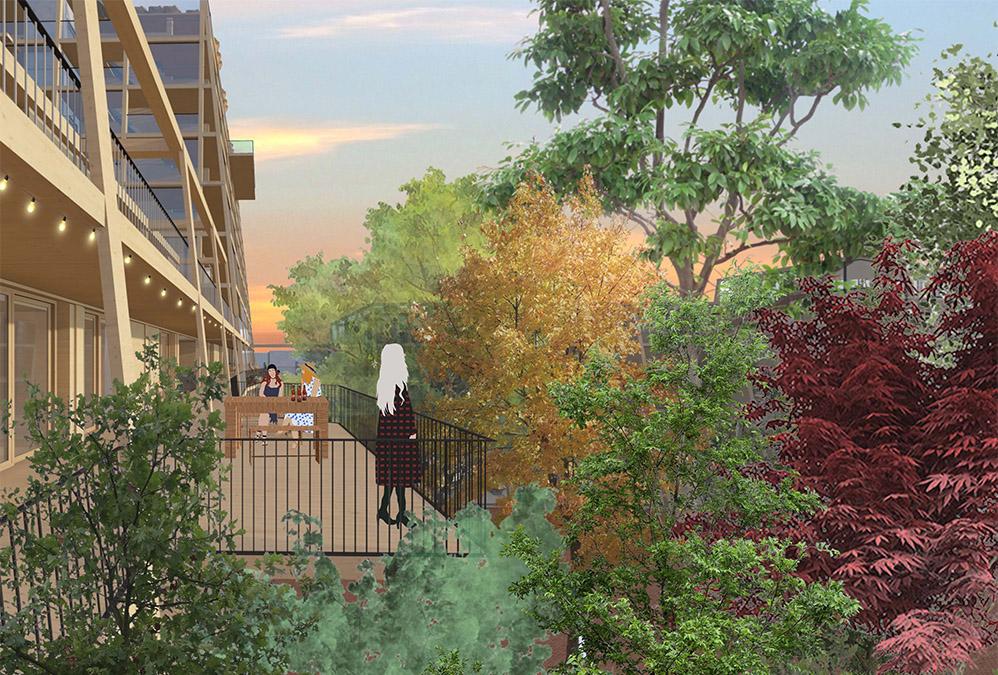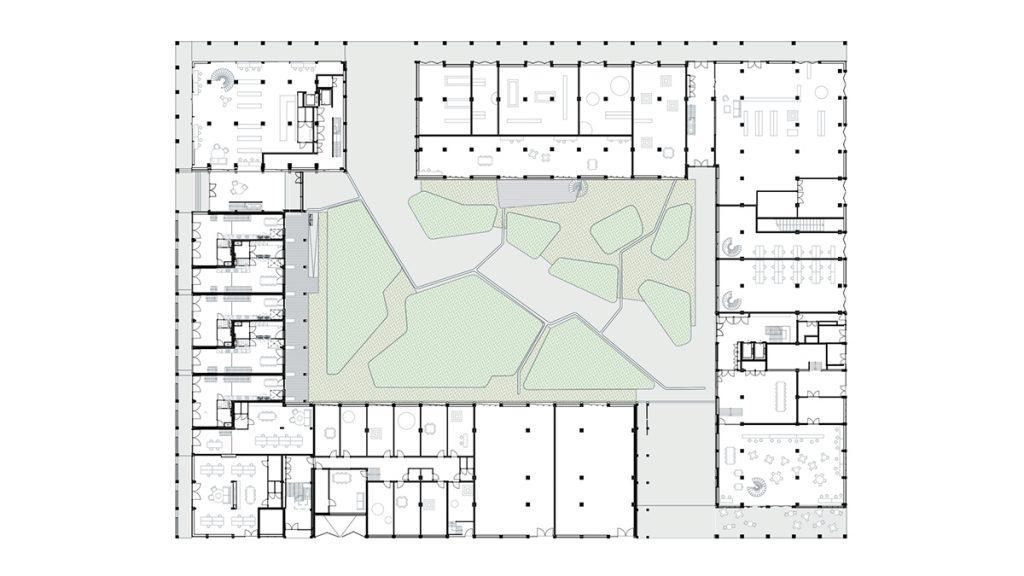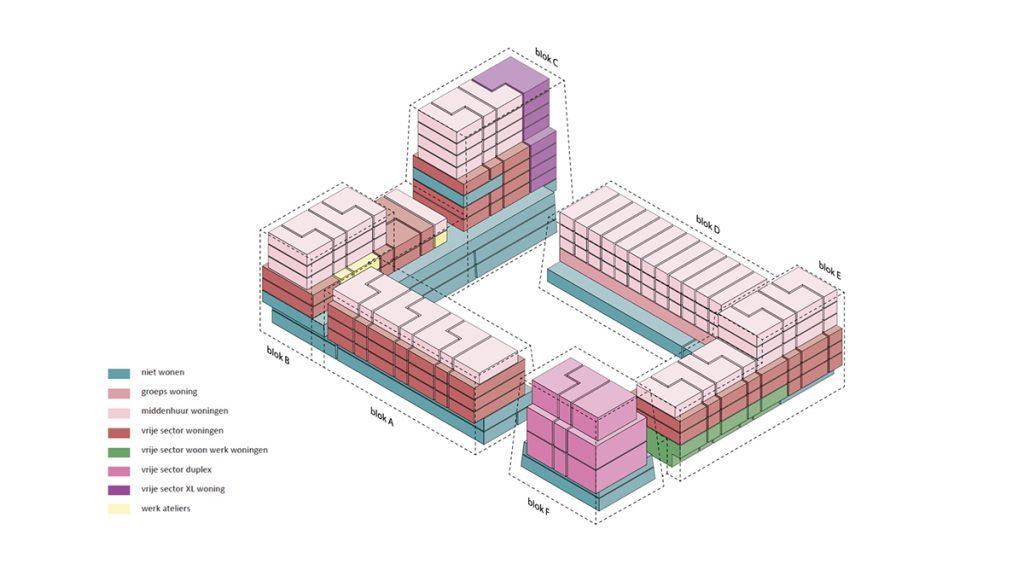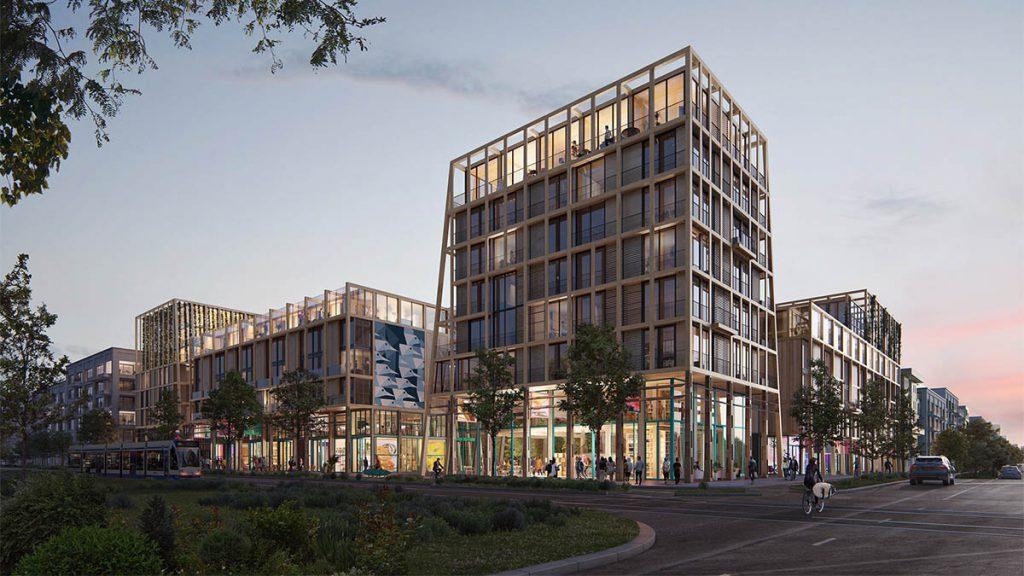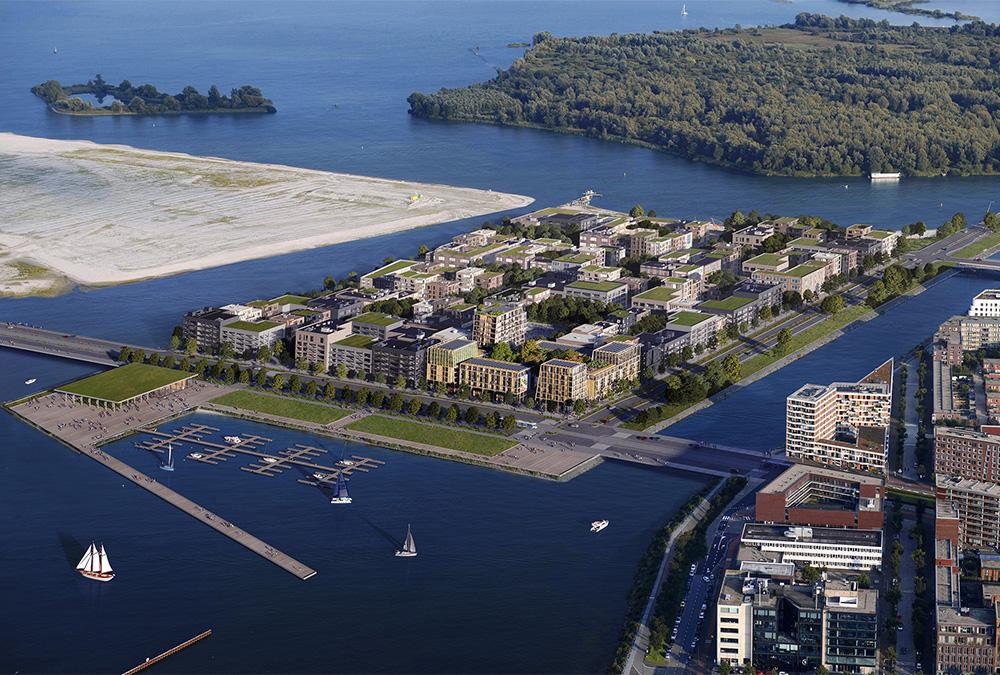Affordable housing made of wood
Marc Koehler and ANA Architects have joined forces to build the Netherlands’ most sustainable and affordable timber mid-range residential complex, with its own tiny forest. The name of this visionary project in the Amsterdam district of IJburg? Robin Wood.
Although the name undoubtedly has swashbuckling connotations, Robin Wood is not about stealing from the rich and giving to the poor. Instead, the focus is on combating climate change. And the action takes place not in Sherwood Forest, but on Centrumeiland (Centre Island) in Amsterdam’s IJburg district. That said, there are certainly trees involved here as well. This dreamscape in wood, designed by Marc Koehler Architects (MKA) and ANA Architects, actually has its own tiny forest. And – as in the legend of Robin Hood – one of the goals is to support the less-than-wealthy. After all, this new urban block will be the most sustainable and most affordable of its kind in the Netherlands.
A multitude of uses
The Robin Wood development will provide a total of 16,300 square metres of space for 165 homes of various types. Flexibly partitionable and affordable units will be available alongside larger homes for families and hybrid residential/office models. Plans call for an additional 6,700 square metres for shops, offices, restaurants, studios and parking spaces. The complex also includes rooftop terraces, gardens and a tiny forest.
When it comes to sustainability, the architects have set the bar high. An estimated 7,420 cubic metres of wood are required for the construction. The aim is to make Robin Wood carbon neutral and net positive. So, it seems rather fitting that an online search for “Robin Wood” also leads to an eponymous major environmental organization. Or a producer of high-quality pellet heating units, especially as both are known for their commitment to social issues.
With Robin Wood, we are taking the next step in sustainable, modular and affordable residential construction. Robin Wood shows that this ambition can easily be combined with a wide variety of flexible, high-quality homes, a Tiny Forest and high-quality shared spaces for all users.
Marcel van der Lubbe, ANA Architects
The project description, which makes reference to the expertise of companies like Centrum Hout, sounds extremely promising. With a building environmental performance (Dutch: MPG) of 0.34/m², the urban block has a small footprint and is net positive. The current standard in the Netherlands is a maximum of 0.8 MPG for new homes. And it is expected to reach 0.4 MPG by 2030. The complex will produce more energy than is needed for the building’s installations. If all residents opt for a green energy provider when they move in, Robin Wood can be designated as “zero carbon”, i.e. a building that produces no carbon emissions during its lifespan.
The planned completion date for this affordable and inspiring residential project is 2024. And the project is conceived as a model for a more environmentally friendly future: developers Edwin Oostmeijer Projectontwikkeling and MaMa Pioneers aim to use Robin Wood to demonstrate that modular timber elements on an industrial scale can effectively help to solve both the climate crisis and the housing shortage.
A revolutionary project
With its use of modular, prefabricated mass wood construction and the creation of socially cohesive residential communities, the project is even described by its designers as “revolutionary” – a word that also evokes associations with its namesake from the British ballads.
Designing with modular wooden elements enables us to benefit from design efficiency and scale advantages, while the concept is continuously improved. For me, Robin Wood is a textbook example of the new community.
Marc Koehler, Marc Koehler Architects
Robin Wood has all the necessary elements to become a landmark flagship project – a project that playfully bridges the gap between a busy city street and a cosy residential area. The design features open spaces with green areas that encourage people to engage in sports activities. This urban village was inspired by the utopian city of New Babylon: a large, open network structure with a wealth of opportunities for meeting up and exercising.
Marc Koehler and ANA Architects created a design with three levels. The lower level is a seven-metre-high, transparent plinth with an arcade. The ground floor houses restaurants, shops, a talent incubator café with studios, a residential lobby, small-scale offices and living/working units. And the underground car park provides space for shared bicycles and cars.
Robin Wood features an “active design”
The middle level consists of homes that embrace the tiny forest. Stairs, paths and shared walkways on the outside of the building form a vertical village, providing what the architects call an “active design”. There are walking routes around the inner courtyard, connections between the buildings, a network of shared outdoor spaces and many visible stairs. All of this is intended to encourage residents to exercise and interact.
Sections of the building jut outwards on the top level and offer panoramic views. Spacious sun decks and shared amenities like rooftop gardens, a playing field and a common living area with kitchen and rooftop terrace are also planned. Residents and business professionals will be consulted on what is offered in the Robin Wood urban block. This will include the selection of studios, exhibitions, workshops and shops.
The advantages of carbon-neutral living
Robin Wood promises to be a high-quality, affordable, ideal space made of wood – a natural material that stores carbon and provides a healthy indoor climate. In addition to being breathable and regulating humidity levels, wood enhances the quality of life for residents thanks to its outstanding acoustic properties. And this innovative building project promotes the intensive use of timber bio-based construction and carbon-neutral housing.
The total emissions of the urban block will be, at the very least, carbon neutral. Not only during construction, but also due to the carbon stored in the wood and the emissions from energy production. Thanks to these sustainability scores, this visionary residential building made of wood offsets 39,149,254 kilometres of exhaust emissions from a mid-range car or, for example, the electricity consumption of 5,132 households over the course of one year.
Ideal living space in wood
The complex is made of wood as far as possible, with a combination of timber frame construction and cross-laminated timber (CLT). Where wood was not used, most materials conform to the ideal of a circular economy, including windows and door frames made of recycled aluminium.
A system of prefabricated timber modules combined with concrete guarantees rapid assembly on site. This considerably reduces construction time, logistical movements and waste flows. Marc Koehler, ANA Architects and the developer already have a wealth of expertise and experience in timber construction architecture. Edwin Oostmeijer, MKA and MaMa Pioneers previously developed the Poppies (MaMa One) in Buiksloterham in Amsterdam using the same construction system. And Robin Wood is intended as a continuation of this commitment to sustainable, future-orientated construction methods.
Robin Wood will be a hip, inviting neighbourhood made of wood. It stands for sustainable, innovative and affordable living and working in an urban village. And it provides space for free-thinking residents, artists and entrepreneurs.
Edwin Oostmeijer Projectontwikkeling BV
A tiny forest for a microclimate
The tiny forest is an essential element at the heart of the design. Robin Wood has adopted the concept developed by Akira Miyawaki and Afforestt founder Shubhendu Sharma in which a highly compact native forest with a large variety of species is planted on a small plot of land. The trees will attract a wide range of bird and insect species, ensuring greater biodiversity and a vibrant natural environment right outside residents’ windows and doors.
The tiny forest also acts as a natural air conditioning system. It provides shade, improves water storage and creates a mild microclimate that is warmer in winter and cooler in summer. On hot summer days, the temperature around a tiny forest is up to six degrees lower than on a paved public square.
A green air purifier
Of course, the dense forest also offers another essential advantage: it filters fine particulate matter from the air. Such advantages are also being utilized by exciting projects like Henning Larsen’s urban all-timber village Fælledby in Copenhagen and Powerhouse Company’s HOLT with its “residential forest” in Groningen.
Robin Wood is based on the principles of open building. The L-shaped residential units can be subdivided in a variety of ways. This means that suitable floor plans can be designed for different lifestyles and adapted to changing living situations. For instance, if a family grows and has more children, a large living space can be reduced in size to accommodate an extra child’s room. And if working from home requires a room with a separate door, that’s no problem either. The complex also features duplex homes on the ground floor that combine living and office space.
Living better together
This attractive project will become part of a larger network of similar buildings in Amsterdam and beyond. The shared living concept of MaMa Pioneers brings residents and business people together to form a community. Prior to construction, the interior design is being planned together with the specialized companies Co-Makers and Ziegler Gautier. This will the foundations for successful community building right from the start.
Residents can interact both online and physically, creating a social network that spans several buildings. They share rooms for exercising, cooking and working, and can organize meetings and exhibitions. And they have the opportunity to establish talent incubators and grow food together. Working and living spaces for artists and talented people from Amsterdam’s art schools are planned as an added attraction.
Robin Wood is a pioneering project
All of this is entirely in keeping with the stated objective of Robin Wood as an affordable, ideal space made of wood. This concept of shared living is also being offered for the first time in the mid-range rental sector in Amsterdam.
MaMa Pioneer’s network of sustainable timber houses enables residents to interact offline and online. It also aims to promote social cohesion in a healthier, more inclusive urban environment. By working with the same partners on everything from financing and development to design, construction and administration, the company is able to offer outstanding value at an affordable price.
Quality of life on an Amsterdam island
In addition to the advantages of sustainability and high living quality, the project also boasts an attractive location on Centrumeiland. This island in Amsterdam will soon be home to 1,500 residences, 70 percent of which will be self-build. Residents can have their own dream home built on various individual or collective plots. And there are plots designated for commercial projects by property developers as well.
Robin Wood is the largest urban block of its kind. As the first building encountered on Pampuslaan and Muiderlaan, its position on the boulevard and marina will make a major contribution to the skyline of the island and all of IJburg.
The Santa Monica of Amsterdam
With its retail businesses, workspaces and terraces, a public library, a surf shop and an organic grocery, the complex will attract a vibrant crowd to its timber arcade. Located close to the suburban railway, the project is destined to become the Santa Monica of Amsterdam. It will be a place where creative people, recreational sports enthusiasts, residents and visitors from all walks of life can come together to enjoy the outdoors and the advantages of the city.
Text: Elisabeth Schneyder
Images: Marc Koehler Architects, Beauty and the Bit
